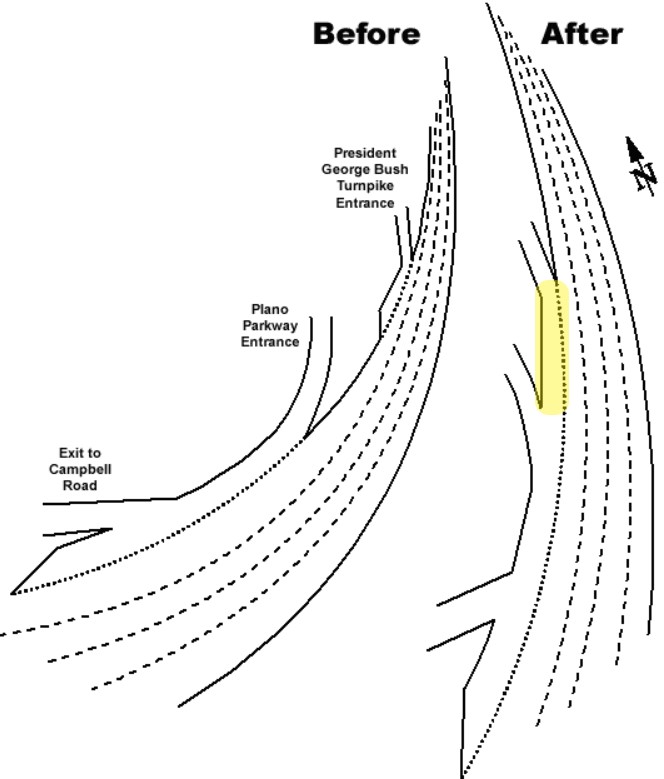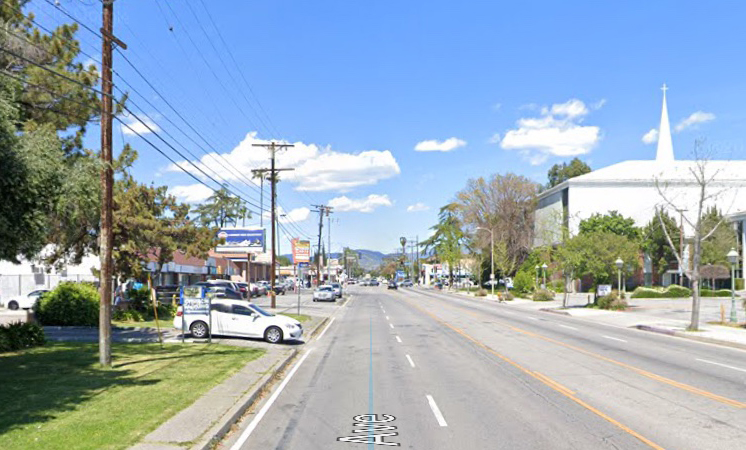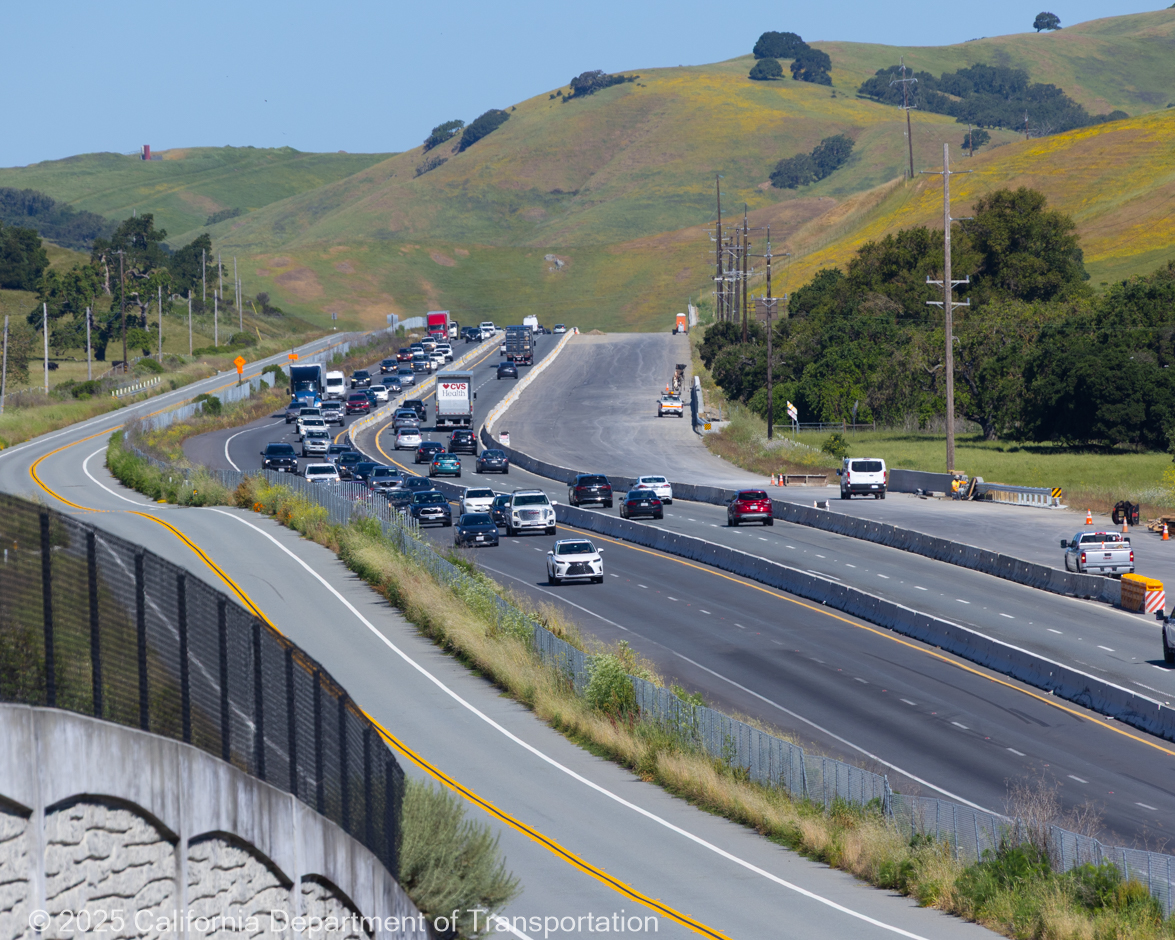The California Transportation Commission has been working on updating its guidelines for the CA State Highway Operations and Protection Program, known as the SHOPP, over the past six months. The SHOPP is the state's largest highway funding program, and its guidelines dictate how its funding is used. The program is subject to provisions in S.B. 960, a just-signed law from Senator Scott Wiener that, among other things, calls for Caltrans to set clear targets for investing in Complete Streets.
Complete Streets
A report from the California Bicycle Coalition [PDF] shows how far behind Caltrans is in meeting its Complete Street investment targets - and thus how slowly the state is progressing on making its streets and roads safer for everyone who uses them - while it continues to invest heavily in accommodating car travel. According to the report, few of Caltrans' own recommendations on safety for pedestrians and bike riders are followed in final plans, and there is a tendency to push them into future, unspecified project phases whereas roadway improvements for car drivers are front-loaded.
S.B. 960 includes major revisions to Caltrans responsibilities, particularly around transparency and showing progress towards Complete Streets goals. These are areas the CTC should be very interested in providing guidance on.
But S.B. 960 does not take effect until January. And, according to CTC Executive Director Tanisha Taylor and the staff presentation at last week's CTC meeting, the new guidelines will neither incorporate nor address any of the changes the new law calls for.
CTC staff plan to finish the guidelines update before the end of the year. But there's no statutory reason this round of updates can't be paused temporarily to allow staff to at least consider what changes will be needed once the law takes effect.
SHOPP guidelines are not required to be updated regularly, and S.B. 960 does not include a deadline to incorporate its provisions - so not addressing them in this update could indefinitely delay including complete streets. Meanwhile Caltrans is already preparing projects to be added to next years' SHOPP list, which will cover four years' worth of projects.
CTC staff's brief legislative update at last week's meeting did not even outline what the S.B. 960 provisions are for the commissioners.
Several groups of advocates had sought to get the CTC's attention on this matter. "Street safety is a crisis now," said Sofia Rafikova, policy advocate for the Coalition for Clean Air, at the meeting. "We're not on track to build the safety upgrades we need now."
ClimatePlan, a coalition of advocates for climate action and safety, had sent a letter to Caltrans in April explaining why it is urgent to do a better job addressing Complete Streets in the SHOPP [PDF]. Then they sent another letter at the end of August pointing out that S.B. 960 was likely to be signed, and urging staff to begin working on addressing its provisions sooner than later. [PDF]
They also recommended that the Commissioners read CalBike's recent report, Incomplete Streets, analyzing Caltrans' progress on building safe infrastructure for people biking, walking, and riding transit along and over state highways.
If the CTC were really committed to transparency and accountability, there are a lot of things they could do on this issue right now. For example: they could include a requirement in the guidelines for Caltrans to post its Complete Streets decision documents online, now, so that advocates and interested members of the public don't have to submit formal public information requests to find out why a project does not include a bikeway or a sidewalk.
If the Commission really cared about Complete Streets, as they claim, they would jump to take action on providing guidance on the S.B. 960 provisions now, instead of pushing to finish this round of guidelines before the law goes into effect.
Auxiliary Lanes

In its letters, ClimatePlan also urged the CTC to carefully consider another topic in the SHOPP guidelines - specifically, where the program is allowed to fund "auxiliary lanes." SHOPP funds are not supposed to be used to add freeway lane capacity, but a loophole that appeared in the California Environmental Quality Act (CEQA) when S.B. 743 was implemented seems to have been incorporated without question into SHOPP guidelines. That is, under CEQA, auxiliary lanes that are less than a mile long are not considered to be widenings, nor to induce driving, so they are not required to mitigate for or even discuss the effect they might have on driving.
Why "less than a mile long" is a magic number that means "no new driving will be induced" isn't clear; but what is clear, from extensive coverage at Streetsblog LA, is that the auxiliary lane loophole is big enough to build a freeway through. SBLA's investigations show that Caltrans and LA Metro have repeatedly broken up bigger projects into a series of small, less-than-one-mile segments, and then called them "separate" projects and claimed they are not subject to the requirement to mitigate for new driving they induce. In L.A. County, Caltrans and Metro used the aux lane loophole to declare that four-plus miles of new freeway lanes will have no environmental impact, because the project consists of multiple segments each less than a mile long.
Whether those projects use any SHOPP funds is mighty hard to find out, given the complicated ways federal, state, and local funds are tracked and applied. Transparency on that score has also been an ongoing issue, and is another subject of S.B. 960.
ClimatePlan's letter urges the Commission to clarify when and where auxiliary lanes and shoulder widening can be funded to make it crystal clear that the SHOPP would not fund them where they could be connected across exits to create a continuous general purpose lane, or if there is an intent to add a lane in the future where a shoulder is widened.
This is not a theoretical problem. There are examples from Los Angeles, mentioned above. A project on I-80 in Yolo County also used SHOPP funds to build a shoulder, which seemed to be setting up extra room for future lanes to be funded by other sources. A Caltrans official was pushed out of her job for raising questions about that project.
Commissioner Darnell Grisby asked about the issue of linking auxiliary lanes together, and Executive Director Tanisha Taylor confirmed that a project that does so in a way that made them total more than a mile would be ineligible for SHOPP funds.
But what didn't get asked was: what's the mechanism to ensure that, or even to see whether it's happening? It took a lot of digging by reporters to figure out what Caltrans and LA Metro were doing on their freeways. How is the public to find out any of this?
CTC staff say they are diligent in making sure projects submitted to the SHOPP comply with its rules, but they have to analyze hundreds of projects every month. Do they have access to information that the public can't see? Even the most dedicated advocates have a hard time pinpointing funding sources for projects, especially when projects combines local, state, and federal funding sources.
The advocates' letter urges stronger clarifying language in these cases. "We recommend that CTC staff be specific that when SHOPP projects are advanced alongside other projects, especially projects that propose to add new lanes to the state highway system, Caltrans and joint project sponsors shall clearly delineate the project components and cost of those components that are SHOPP-funded versus funded with other funds," they write. "CTC staff and the public should be able to clearly determine that SHOPP funds are not being used for any project components that add new lanes to the system."
Several representatives of rural areas - Nevada, Stanislaus, and Butte counties - disagreed with the advocates, saying they need the "flexibility" to be able to build shoulders and auxiliary lanes "for safety." It's not really clear, however, what they meant. Where does a rural area need to build an auxiliary lane that's less than a mile long? And why would being more clear about how SHOPP funds are used cause them to lose any funding flexibility? If they are actually complying with current rules, there shouldn't be any need to argue against transparency on this.






